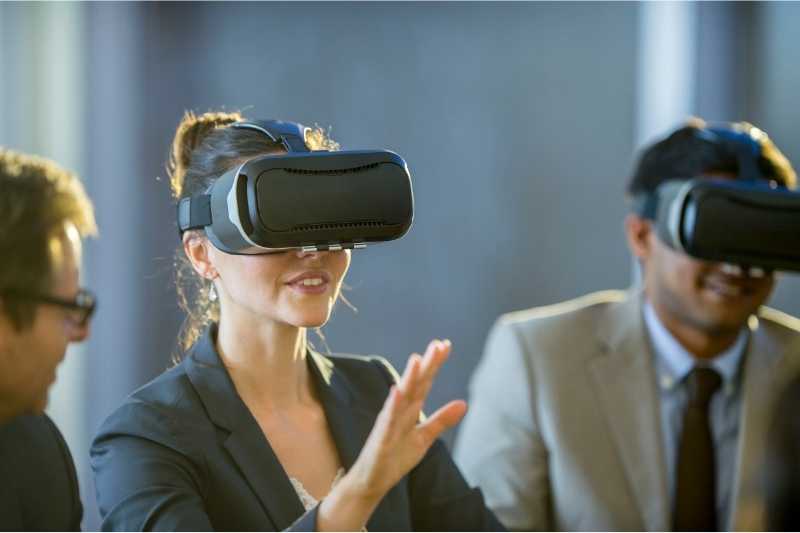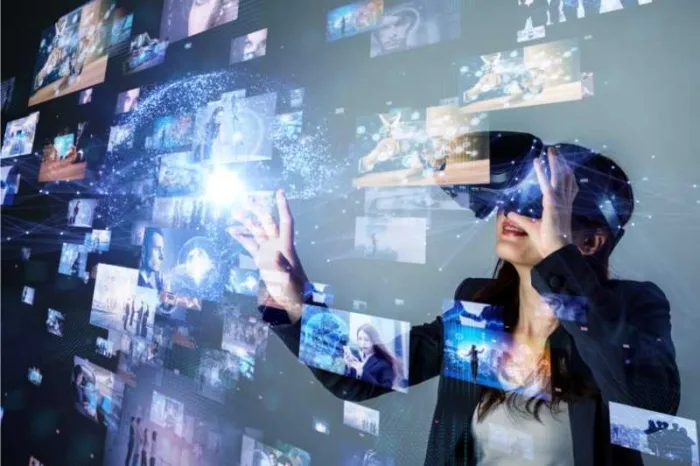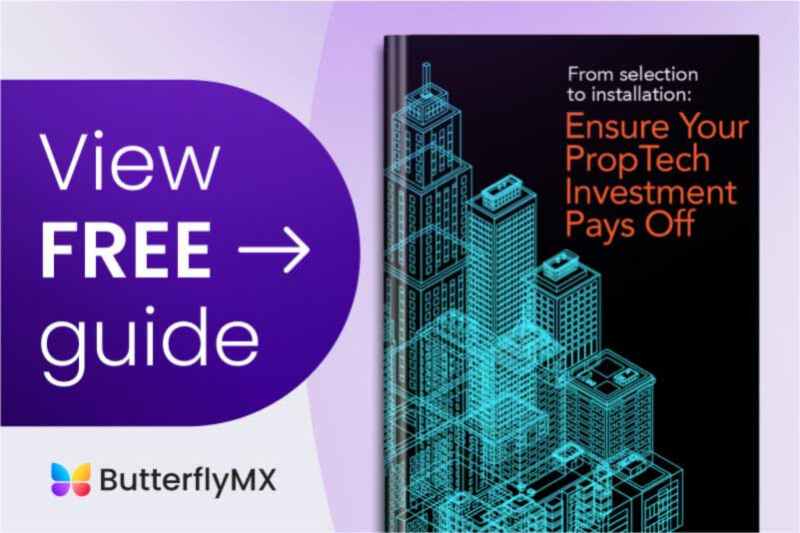Key takeaways
- Virtual reality in real estate allows people to get close and personal with a property without being physically present.
- Virtual tours, virtual staging, and architectural visualization are the most common uses of VR in real estate.
- Typically, implementing virtual reality won’t cost you more than a few thousand dollars when it comes to marketing your property or enriching the lives of your residents.
- VR real estate saves you time, appeals to Millennial and Gen Z residents, is a cost-effective marketing strategy, and is easy to use.

When it comes to marketing your multifamily property, you have to get innovative to stand out. And embracing property technology is the perfect way to do that. In fact, virtual reality in real estate is one technology that directly connects with Millennial and Gen Z residents. Moreover, it’s surprisingly easy to use and gives prospective renters a lot more information about your property before they apply.
This guide covers what virtual reality real estate is and how it works. Next, discover three innovative ways virtual reality in real estate transforms the industry. Finally, we’ll cover how VR directly benefits you and the different ways you can use VR effectively for your property.
This post covers:
- 3 Ways virtual reality in real estate transforms the industry
- What is virtual reality in real estate used for?
- How much does virtual reality in real estate cost?
- What are the benefits of virtual reality in real estate?
- Considerations for implementing virtual reality in real estate
- Virtual reality in real estate FAQs
3 Ways virtual reality in real estate transforms the industry
Specific uses of virtual reality in real estate include:
1. Virtual tours
Virtual apartment tours are one of the most popular uses of virtual reality. You can upload virtual tours to rental listing websites as well as your property’s website.
How does a virtual tour work?
Virtual reality property viewing empowers prospects to view your unit as if they were there in person through photos, videos, or a 3D rendering. Virtual tours give people a 360-degree view of your vacant rental units.
3D tours include multiple angles in each room, typically from wall to wall. Even closets, bathrooms, and hallways are included, leaving no angle of the unit unexplored. As a result, prospects can get a feel for the unit without ever having to visit your property in person.

2. Virtual staging
Virtual staging software allows prospective residents to visualize the unit with furniture. As a result, this empowers them to envision themselves living there and makes them eager to rent with you.
When you give a virtual tour, the vacant unit is often unfurnished. But virtual staging allows people to see how furniture — such as couches, TVs, and tables — will look in the unit. In fact, virtual staging even shows prospects how art looks on the walls!
Learn more about virtual staging software:
3. Architectural visualization
Similar to virtual tours with one big catch, architectural visualization involves viewing renovations or additions to a newly built property. As a result, architectural visualization allows you to imagine better how the new addition will look once constructed. Details appear in a 3D model, which allows you to explore every nook and cranny.
Moreover, architectural visualization also helps prospective residents or buyers who are interested in a property before it’s finished being constructed. Once the final design has been selected, this can be an effective marketing strategy for quickly leasing up.
What is virtual reality in real estate used for?
Virtual reality is used in real estate to show a property to a prospect virtually as if they were there in person. With this in mind, there are many different types of virtual reality real estate software available that are changing the proptech landscape by connecting people to a property virtually.
How much does virtual reality in real estate cost?
Typically, something like a virtual tour will cost around $750 from a virtual reality real estate company. The good news is that with this proptech investment, they will completely handle creating and publishing the virtual tour. So, if you’re not the most technologically savvy person, you don’t need to worry.
For instance, virtual staging usually costs between $200 and $400, depending on the number of rooms to be staged.
Moreover, architectural visualization typically costs between $1,000 and $2,000, but that all depends on who you’re working with for a project.

What are the benefits of virtual reality in real estate?
Virtual reality has changed how people find multifamily housing. If you don’t adapt, you risk losing out on leads. Luckily, the benefits of utilizing virtual reality are just as good for you as they are for your prospective residents.
Here are the biggest benefits of virtual reality real estate:
- Appeals to Millennials and Gen Z. Virtual reality appeals to a younger crowd, which makes up the majority of today’s renter pool.
- Saves time. You waste less time leading tours of your property because potential residents already have a good idea of what it looks like. As a result, you can focus your time and energy on other essential tasks.
- It’s easy to use. Most VR tools are easier to implement than you might think.
- Saves money. With virtual reality, you save money and resources because you don’t have to take as many trips to physical locations.
Considerations for implementing virtual reality in real estate
Here are some considerations to think about when implementing virtual reality:
- VR platform. Whether you plan to use headsets or are opting for a mobile app or online platform to host immersive experiences, a robust VR platform is crucial for virtual tours.
- Software. The software you choose is one of the most important considerations because it directly influences the quality of your virtual property tours and interactive features. With this in mind, the software you select will ultimately shape how your property is showcased.
- Guided vs. interactive. Choosing between offering guided or interactive tours influences how much work will ultimately go into the development process. With a guided tour, a prospect simply sits back while they’re virtually guided to different parts of the property. You may even choose to show a pre-recorded video in this model. In contrast, an interactive tour offers the prospect a chance to explore the property on their own and interact with several elements.
- Animation and level of detail. Detailed animations bring properties to life, providing prospects with a completely immersive experience as they explore your property.
- BIM elements. BIM, or building information modeling, is an important consideration because it can provide comprehensive and accurate digital representations of properties. For instance, BIM elements include detailed architectural and construction data, offering a more realistic virtual experience.
Virtual reality in real estate FAQs
Here are some commonly asked questions about virtual reality in real estate:
- Is virtual real estate profitable?
- What can you do with virtual real estate?
- How do you make VR real estate?
Is virtual real estate profitable?
Yes, virtual reality is profitable. In real estate, VR enhances property showcasing, virtual tours, and remote property viewings. This leads to an increase in high-quality prospects, more signed leases, and improved resident satisfaction.
What can you do with virtual real estate?
You can build virtual properties that generate income, like leasable buildings, interactive venues, and more! Additionally, prospective investors can buy, sell, and own virtual land or properties using blockchain-based platforms.
Moreover, virtual reality real estate is often used to establish and operate virtual businesses or host virtual events and conferences. Additionally, virtual reality is typically used in educational spaces to create virtual campuses and classrooms for fully immersive learning experiences.
How do you make VR real estate?
Creating VR real estate requires choosing the right VR platform and software for showcasing your property.







